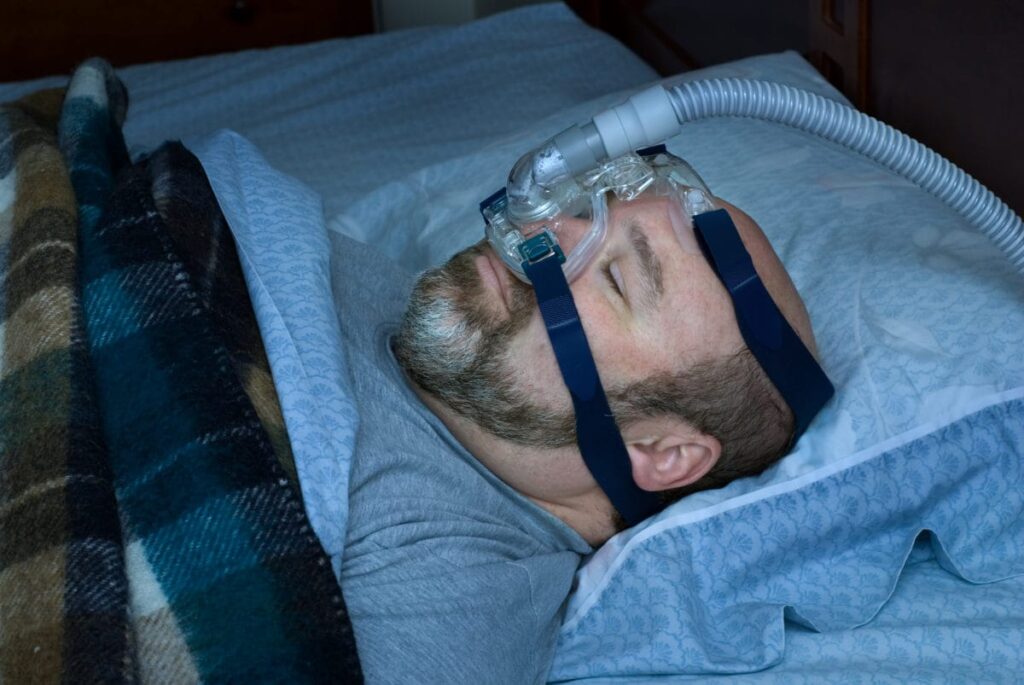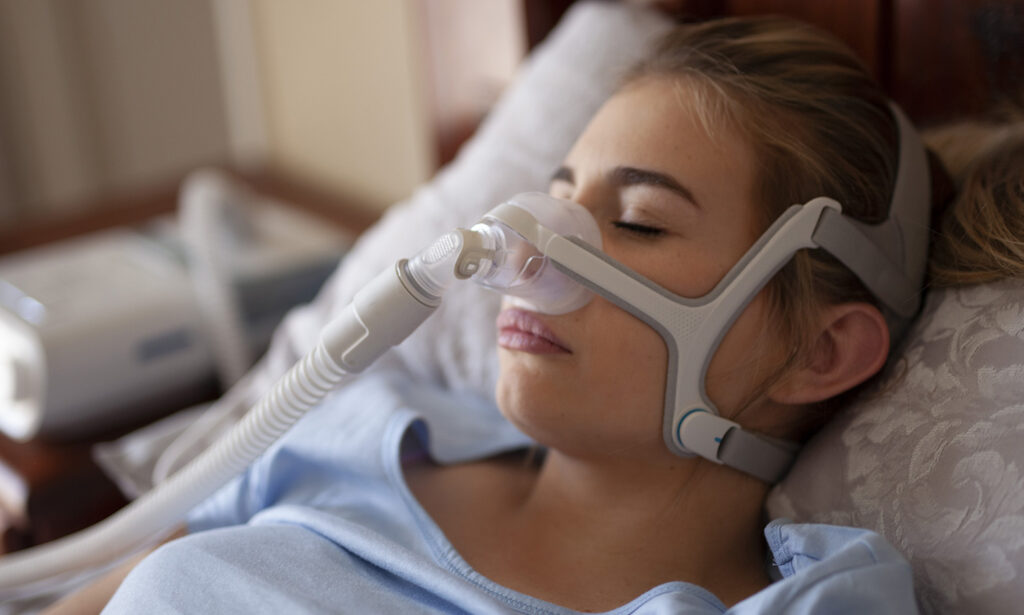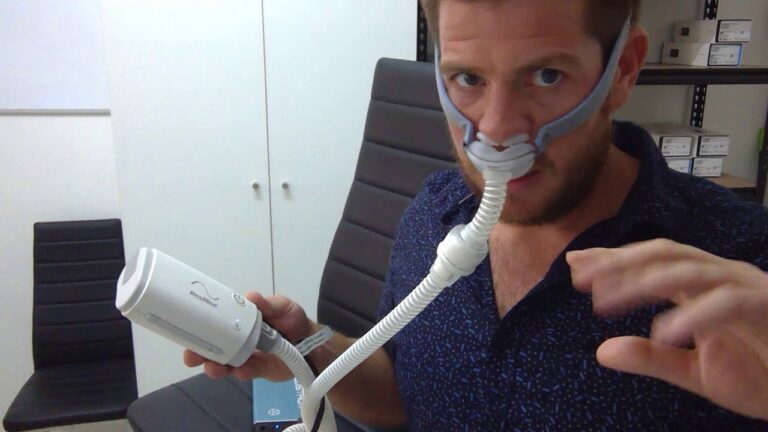Sleep apnea is a common sleep disorder that affects millions of people worldwide. Continuous positive airway pressure (CPAP) machines have long been the standard treatment for sleep apnea, helping individuals breathe more easily during sleep. In recent years, there have been significant advancements in CPAP technology, making these devices more comfortable, efficient, and convenient for users.
This article will explore the various innovations in CPAP technology, what to expect from these advancements, and how to buy CPAP machines that can improve the quality of sleep for individuals with sleep apnea.
Understanding CPAP Technology
The Basics of CPAP Machines
CPAP machines work by delivering a steady flow of pressurized air through a mask worn over the nose or mouth, keeping the airway open and preventing apneas (breathing pauses) during sleep. These machines consist of three main components: a motor that generates the air pressure, a humidifier to add moisture to the air, and a mask or interface that delivers the pressurized air to the user.
Over the years, CPAP machines have become more advanced in terms of their functionality and features. Early models were often bulky, noisy, and uncomfortable, but recent innovations have addressed these limitations, making CPAP therapy more user-friendly and effective.

Modern CPAP machines now come equipped with advanced features such as heated humidification, which helps to alleviate dryness and congestion often associated with continuous airflow. Additionally, many models offer data tracking capabilities, allowing users and healthcare providers to monitor the effectiveness of the therapy and make adjustments as needed for optimal treatment outcomes.
The Role of CPAP in Sleep Apnea Treatment
Sleep apnea is a serious condition characterized by repetitive breathing interruptions during sleep. These interruptions can lead to fragmented sleep, excessive daytime sleepiness, and other health complications. CPAP therapy is considered the gold standard treatment for sleep apnea and can significantly improve the quality of life for those affected.
By providing a constant flow of air, CPAP machines help to keep the airway open, preventing the collapse of soft tissues in the throat and reducing or eliminating apneas. This allows individuals with sleep apnea to breathe effortlessly throughout the night, promoting better sleep and improving their overall health and well-being.
It is important to note that CPAP therapy is not a one-size-fits-all solution. Each individual may have unique needs and preferences when it comes to CPAP treatment. Some users may prefer nasal masks, while others may find full-face masks more comfortable. Finding the right mask fit and adjusting the settings to suit individual comfort levels are crucial steps in ensuring the effectiveness of CPAP therapy. Visit https://ahasf.org/the-role-of-cpap-machines-in-managing-sleep-apnea to get more about the role of CPAP machines in managing sleep apnea.
Recent Innovations in CPAP Technology
Continuous Positive Airway Pressure (CPAP) machines have revolutionized the treatment of sleep apnea, providing individuals with a non-invasive solution to improve their quality of sleep and overall well-being. Over the years, there have been remarkable advancements in CPAP technology, enhancing the comfort, convenience, and effectiveness of these devices.
Advancements in Comfort and Fit
One of the most significant advancements in CPAP technology is the improved comfort and fit of the devices. Manufacturers have gone above and beyond to address the concerns of users who found the previous designs uncomfortable and intrusive. With extensive research and development, they have developed masks and interfaces that are more lightweight, less obtrusive, and designed to minimize discomfort during sleep.
These advancements include the use of softer materials that gently rest against the skin, adjustable straps that ensure a secure yet personalized fit, and cushioning features that enhance the overall comfort of wearing the mask. With these innovations, individuals can now experience a restful night’s sleep without the constant awareness of their CPAP device.
Additionally, there are now a variety of mask options available to suit different preferences and needs. Full-face masks cover both the nose and mouth, providing maximum air pressure. Nasal masks cover only the nose, while nasal pillow masks have inserts that fit directly into the nostrils. These options give individuals the freedom to choose the design that best suits their comfort and sleep requirements.
Improvements in Noise Reduction
Noise from CPAP machines has been a common complaint among users, often causing disruptions in sleep for both the user and their sleeping partners. However, recent innovations have addressed this issue by reducing the overall noise produced by these devices.
Manufacturers have invested in quieter motors that operate smoothly and silently, ensuring a peaceful sleep environment. Additionally, improved airflow designs and sound-dampening features have been incorporated into the devices, further minimizing noise disturbances. These advancements allow individuals to enjoy a restful night’s sleep without the constant hum of their CPAP machine in the background.

Progress in Portability and Travel-Friendly Devices
Another significant advancement in CPAP technology is the increased portability and travel-friendly design of these devices. Early CPAP machines were primarily designed for use at home and were not easily transportable. However, modern CPAP machines have undergone a remarkable transformation, making them ideal for individuals who lead an active lifestyle or frequently travel.
Compact and lightweight, these portable CPAP machines can easily fit into a travel bag or suitcase, allowing individuals to maintain their sleep apnea therapy while on the go. Equipped with rechargeable batteries, these devices eliminate the need for constant access to a power source, making them perfect for camping trips or other outdoor activities.
Furthermore, these travel-friendly devices often come with convenient travel cases, ensuring that all the necessary components are neatly organized and protected during transportation. With easy-to-use interfaces and smartphone connectivity, individuals can seamlessly adjust their settings and monitor their therapy progress, regardless of their location.
In conclusion, the recent innovations in CPAP technology have significantly improved the comfort, convenience, and effectiveness of these devices. With advancements in comfort and fit, noise reduction, and portability, individuals can now experience a more restful night’s sleep, both at home and while on the go. As technology continues to evolve, we can expect further advancements that will continue to enhance the lives of those who rely on CPAP therapy.
The Future of CPAP Technology
Predicted Technological Developments
The future of CPAP technology holds great promise for further advancements in sleep apnea treatment. Researchers and manufacturers are continually exploring new technologies and approaches to improve the effectiveness and convenience of CPAP therapy.
One area of ongoing research is the development of smart CPAP machines that can monitor and adjust treatment settings in real-time based on individual needs. These devices could utilize sensors and artificial intelligence algorithms to optimize air pressure levels, humidity, and mask fit, ensuring the most comfortable and effective therapy for each user.
Moreover, the integration of Internet of Things (IoT) technology into CPAP devices is another exciting avenue for future development. IoT-enabled CPAP machines can communicate with other smart devices, such as smartphones or wearable fitness trackers, to provide users with comprehensive sleep data analysis and actionable insights for better sleep quality.
The Impact of AI and Machine Learning
Artificial intelligence (AI) and machine learning technologies have the potential to revolutionize CPAP therapy. These technologies can analyze large amounts of data collected from CPAP users, identifying patterns and trends that can help improve treatment outcomes.
By analyzing sleep data, AI algorithms can provide personalized recommendations for optimal therapy settings, monitor device performance, and detect early signs of potential issues, such as mask leakage or airway obstruction. This proactive approach can help individuals with sleep apnea receive timely interventions and adjustments to their therapy, enhancing its effectiveness and overall success.
Furthermore, the application of AI in CPAP technology extends beyond individual therapy optimization. Researchers are exploring the use of AI-powered predictive analytics to forecast trends in sleep apnea prevalence, identify high-risk populations, and develop targeted preventive strategies. This data-driven approach has the potential to not only improve individual treatment outcomes but also contribute to public health initiatives aimed at reducing the burden of sleep disorders on a larger scale.
Choosing the Right CPAP Machine
Factors to Consider When Selecting a CPAP Device
With the wide variety of CPAP machines available on the market, choosing the right one can be a daunting task. Several factors should be considered when selecting a CPAP device:
- Prescription Requirements: Ensure that the CPAP machine meets the prescription requirements set by your healthcare provider.
- Device Features: Consider the specific features you need, such as ramp-up settings, data recording capabilities, or integrated humidifiers.
- Mask Compatibility: Check if the device is compatible with a variety of mask options to find the most comfortable fit.
- Portability: If you frequently travel or need a portable device, look for lightweight and travel-friendly CPAP machines.
- Price and Insurance Coverage: Evaluate the cost of the device and check if it is covered by your insurance provider.
Understanding the Different Types of CPAP Machines
CPAP machines come in various types, catering to different needs and preferences:
- Standard CPAP: These machines deliver a constant airflow at a fixed pressure setting throughout the night.
- Auto-adjusting CPAP (APAP): APAP devices continuously monitor airflow and adjust pressure levels automatically, making them suitable for individuals with varying pressure needs.
- Bilevel/BiPAP: Bilevel machines provide two levels of pressure, a higher level during inhalation and a lower level during exhalation. These machines may be recommended for individuals who have difficulty exhaling against a constant pressure.
It is essential to consult with a sleep specialist or healthcare provider to determine the most suitable type of CPAP machine for your specific sleep apnea needs.
The Importance of Keeping Up with CPAP Innovations
Benefits of Staying Informed About CPAP Technology
Staying informed about the latest CPAP innovations can have several benefits for individuals with sleep apnea:
- Improved Treatment Experience: By keeping up with advancements in CPAP technology, users can benefit from the latest features and designs that promote comfort, sleep quality, and therapy adherence.
- Enhanced Therapy Success: Innovations in CPAP technology aim to make therapy more effective and personalized, leading to better treatment outcomes and improved overall health.
- Increased Convenience: Knowing about travel-friendly CPAP machines and portable accessories enables users to maintain therapy while traveling and enjoy a good night’s sleep wherever they are.
How to Stay Updated on CPAP Innovations
To stay updated on CPAP innovations and the latest advancements in sleep apnea treatment, consider the following:
- Visit Manufacturer Websites: Check the websites of CPAP machine manufacturers for product updates, new releases, and information on emerging technologies.
- Join Support Groups: Joining online sleep apnea support groups or forums can provide valuable insights from fellow CPAP users who share their experiences and knowledge about new technologies.
- Attend Sleep Apnea Conferences and Exhibitions: These events often showcase the latest CPAP devices, accessories, and research, allowing individuals to stay informed about the advancements in sleep apnea treatment.
- Consult with Healthcare Providers: Regularly engage with your sleep specialist or healthcare provider to discuss new developments in CPAP technology and explore options for optimizing your therapy.
In conclusion, innovations in CPAP technology have significantly improved sleep apnea treatment, making CPAP therapy more comfortable, efficient, and convenient for users. Advancements in comfort and fit, noise reduction, and portability have transformed the CPAP experience, ensuring better sleep quality and treatment adherence. The future holds even more promise, with predicted advancements utilizing AI and machine learning to provide personalized and proactive therapy. By staying informed and choosing the right CPAP machine, individuals with sleep apnea can experience the benefits of these innovations and enjoy restful nights of sleep.

